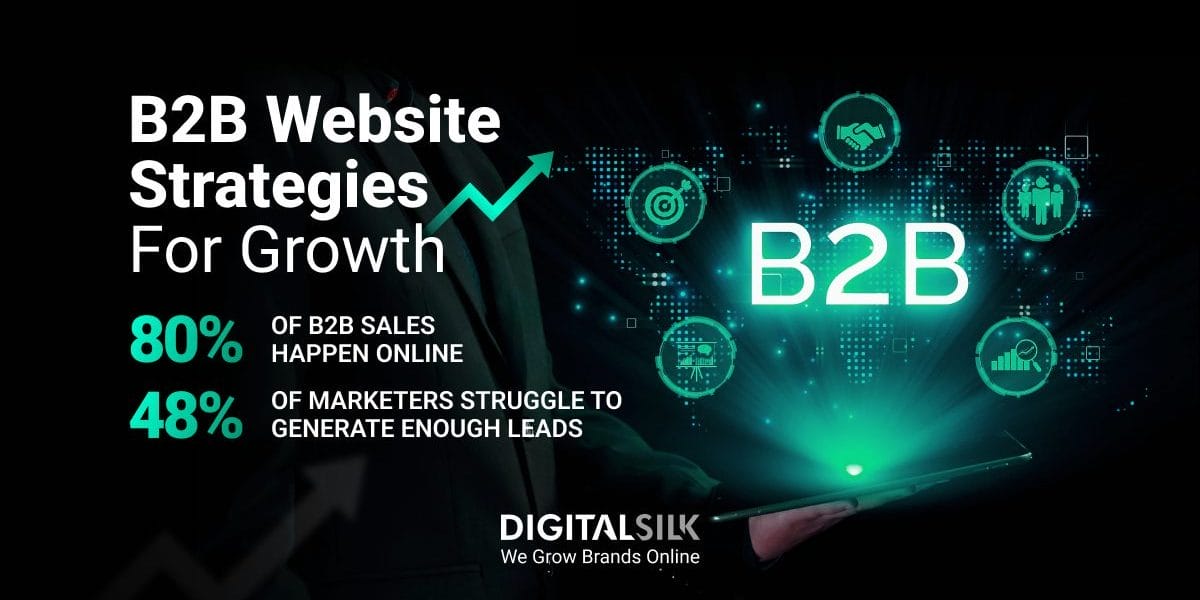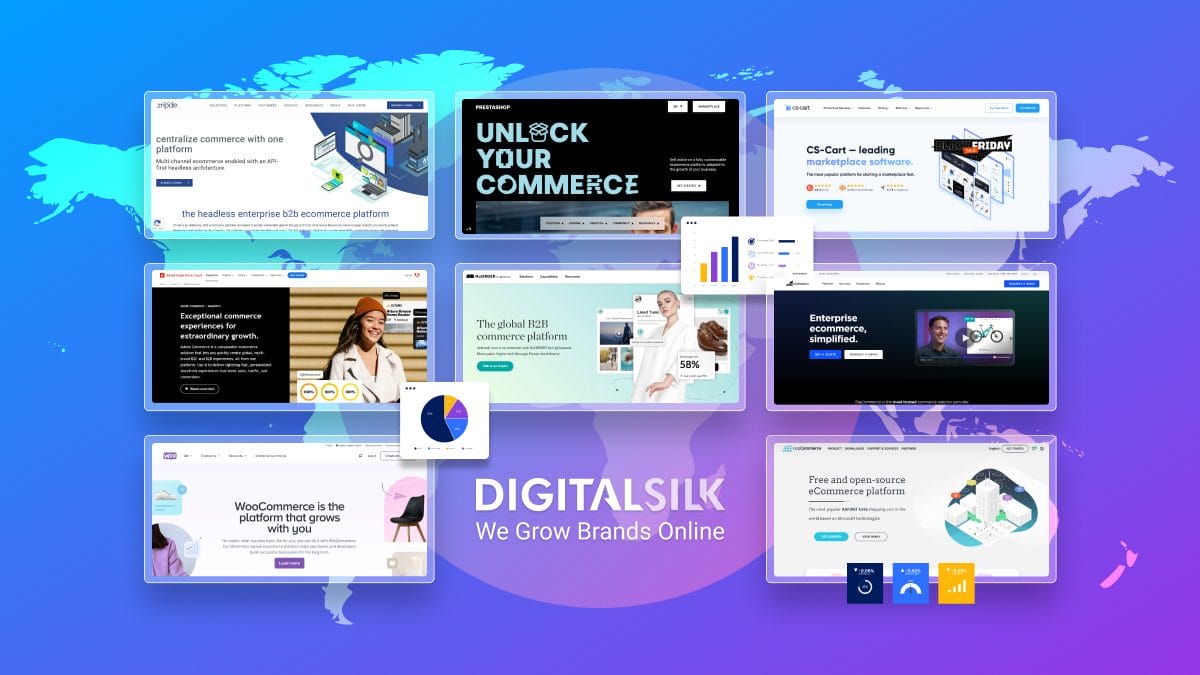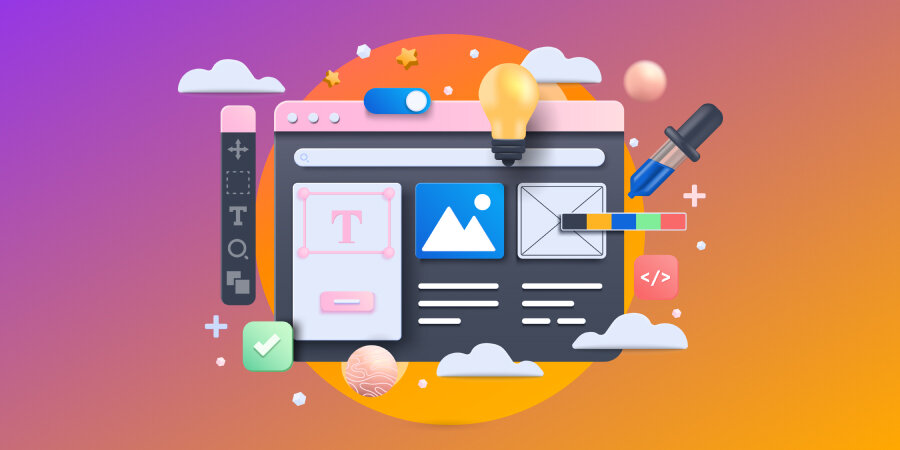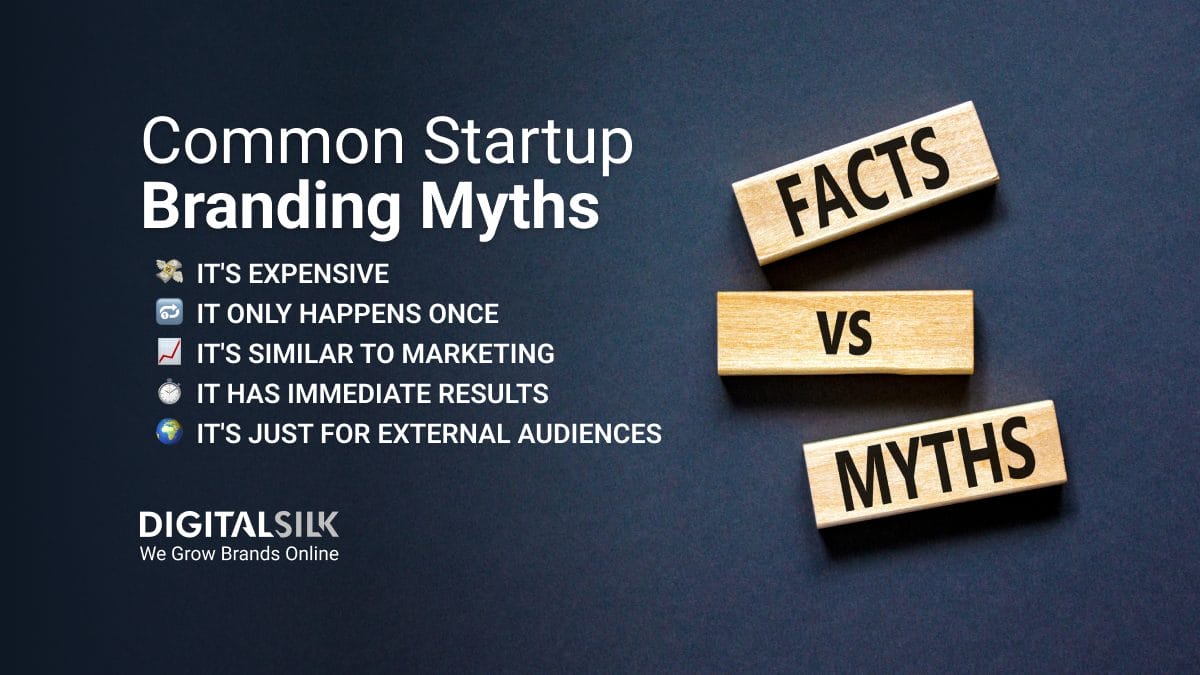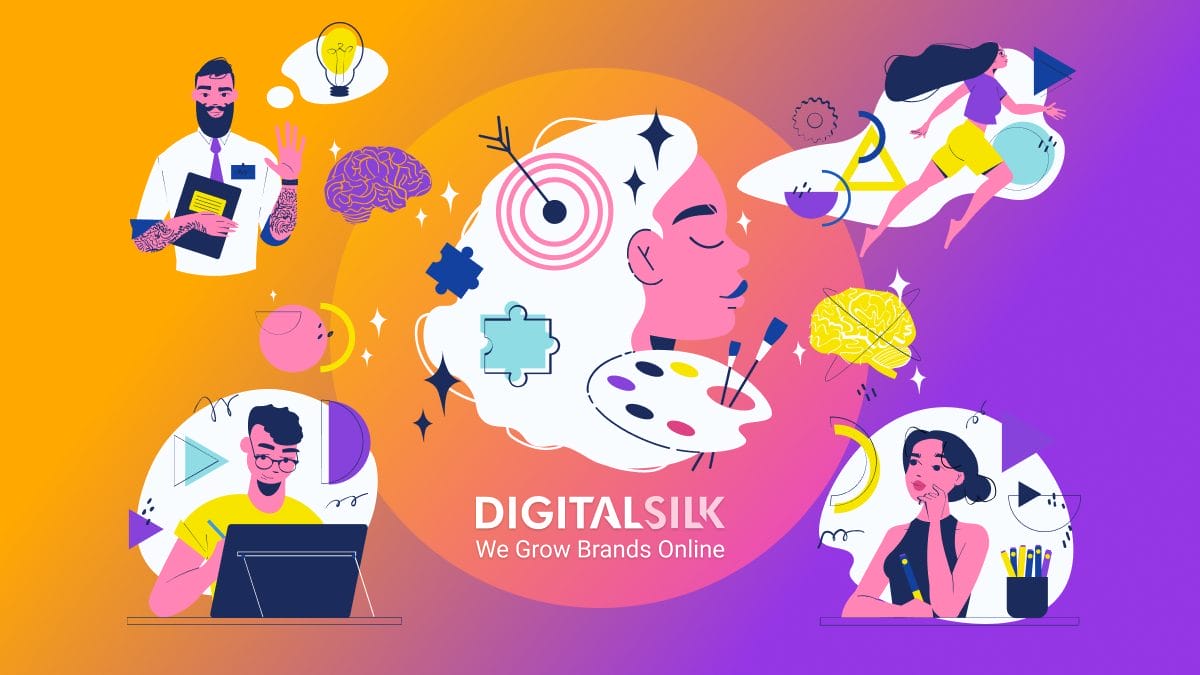80% of B2B sales are expected to take place online in 2025.
While market trends and client preferences always fluctuate, it doesn’t mean you have to uproot your entire marketing roadmap to meet these evolving demands.
With a well-defined and research-backed B2B website strategy, you can establish a strong foundation to adapt, scale and remain relevant in a dog-eat-dog industry.
In this post, we’ll examine the key aspects of developing a B2B website strategy, its impact on business growth and the emerging trends that are shaping the future of B2B sales.
How To Create A B2B Website Strategy
A B2B website strategy outlines your end-to-end approach to attracting targeted traffic, increasing lead generation and establishing a recognizable brand image.
This strategy reflects your brand guidelines and persona, establishes your current market positioning and identifies core functional and design elements.
With a well-structured strategy, you can define clear B2B website goals, connect with your target audience and tailor your marketing efforts based on performance.
Below, we’ve compiled the essential elements of a B2B website strategy based on their industry impact, user experience implications and long-term results.
1. Business Strategy Definition
The first step involves carefully analyzing your business strategy and setting clear objectives for each variable, including:
- Website goals: Your site is an extension of your overarching business goals. Determine what you want to achieve with your page and then create an action plan accordingly. Moreover, you should consider the desired timeline for each objective to measure your progress accurately.
- Target audience: 82% of businesses agree that high-quality audience data shapes their marketing campaigns. To effectively analyze your target demographic, examine intent data that includes both first-party research and third-party information from external sources to determine topics of interest, pain points, shopping behavior, geolocation information and engagement habits.
- Unique Value Propositions (UVP) and competitor analysis: You can boost brand recognition and engagement by highlighting your UVPs and key differentiators through a competitive analysis. Examine the competition’s strengths and weaknesses, determine gaps in the market that your business can fill and develop messaging that solves your audience’s needs.
- Key Performance Indicators (KPIs): Keeping track of metrics like conversion rates, user engagement, search engine visibility and click-through rates (CTR) can help you pinpoint areas of improvement and compare your progress against industry benchmarks. Set realistic KPIs for each objective and monitor progress regularly to assess performance and make necessary adjustments.
- Allocated budget and resources: In 2024, global marketing and advertising spending reached a sizable $1.756 billion. Proper budget allocation and resource management can impact the outcome of your B2B website strategy since you can delegate tasks more efficiently and invest in the right areas to generate optimal ROI.
2. Conversion Rate Optimization
82% of B2B clients are willing to purchase from vendors online. You can easily turn passing visitors into regular customers with Conversion Rate Optimization (CRO) tactics.
Conversion rates highlight the percentage of website visitors who complete a desired action, such as filling out a contact form or purchasing the latest deals.
If your current conversion rates are lower than you’d like, it’s time to optimize your strategies by focusing on the following elements:
- Messaging and market positioning: Defining your UVP is one thing, but communicating it effectively to your audience is another. It’s important to consider how you want audiences to perceive and interact with your brand and why they should choose your services over the competition.
- Page structure and layout: A notable 88% of users abandon websites with poor experiences. To minimize bounce rates, you should strategically organize the content on your website to naturally guide visitors towards the desired action. This includes using clear and concise headings that reflect your core values, compelling calls-to-action to encourage engagement and interactive website elements to boost time on site.
- Testimonials and social proof: 53% of B2B marketers agree that case studies and customer success stories are effective content marketing strategies. On the other hand, 76% of B2B buyers will opt for another supplier if they can’t find customer reviews. When customers read about the positive experiences of others, they’re more likely to trust and engage with your brand. Incorporating testimonials, case studies and trust badges builds credibility and reduces hesitations, directly boosting conversion rates.
- Lead follow-up: An often-overlooked aspect of sales is the importance of promptly following up on qualified leads and optimizing the process from form submissions to sales discovery. It’s essential you analyze leads and identify their pain points to personalize your follow-up approach. This may include offering free demos, consultations or trials that reflect your expertise and demonstrate your genuine interest in helping them.
- A/B testing: Creating a website strategy is often a game of trial and error. Some things may work well for one audience, while others may not quite hit the mark. You can use A/B testing to experiment with different website elements and see what results in higher engagement and conversions.
- Real-time adjustments: Your CRO strategy isn’t set in stone — you can make real-time adjustments based on user feedback, website analytics and A/B testing results. Even if something is currently effective, you should continuously optimize your on-page content to align with client preferences and market demands.
3. Sales Funnel Optimization
74% of B2B marketers say content marketing has helped them generate demand and leads, making it a proven way to optimize the user journey and drive sales.
This approach aims to attract new visitors, re-engage existing clients and convert leads into paying customers.
You should modify your content to suit audiences at all three stages of the conversion funnel, including:
1. Top-Of-Funnel Content
The initial stage focuses on boosting brand awareness by educating and engaging your audience instead of using overt selling tactics.
The goal is to produce informative, relevant and valuable content to build a loyal following and establish brand authority.
Some content types to consider at this stage include blog posts, educational videos, webinars, podcasts and other interactive elements.
For instance, adding video content to your website can increase time on site by a significant 88%.
Take a look at Zendesk, a well-known customer service software company and its somewhat unconventional yet effective promo video below:
2. Middle-Of-Funnel Content
The middle phase of the content funnel narrows the gap between brand awareness and purchase intent.
It ties the initial intrigue built by top-of-funnel content to the specific solutions for the audience’s needs at the very bottom.
Here, you can focus on in-depth educational content, tutorials and demos to showcase your product or service’s value and expertise in your chosen field.
You can do this by publishing eBooks, whitepapers, industry-specific landing pages and persona-based email campaigns to warm up leads.
At Digital Silk, we publish our annual Digital Trends Guide to educate our audience on the latest industry insights and best practices.
3. Bottom-Of-Funnel Content
At the very bottom of the content funnel, you should focus on directly marketing your products and services to an already interested audience.
Highlight your Unique Selling Points (USPs) to establish your brand as a thought leader in the industry and create conversion-focused content.
Some examples of this approach include case studies, product pages, competitor comparisons and free trials.
A multi-layered content strategy nurtures prospects and progressively moves them closer to conversion.
4. Well-Structured SEO Strategies
99.55% of all content receives zero clicks from Google and the search engine uses over 200 factors to rank results.
Even with careful planning and thoughtful execution, your B2B website content strategy can easily go unnoticed.
B2B SEO normally targets industry professionals who make rational and data-driven purchasing decisions and relies on somewhat niche, low-volume but intent-driven keywords.
The goal here is to focus on lead quality, maximize Return on Investment (ROI) and build long-term loyalty and trust.
To do this, focus on the following SEO elements:
- On-page SEO: Optimizes webpages and their content to rank higher and drive organic traffic. This includes keyword research, meta descriptions, title tags, header tags, internal linking and image optimization.
- Off-page SEO: Tackles backlinks, reviews and recommendations so search engines see your website as a trustworthy and authoritative source of information. It relies on E-E-A-T (Experience, Expertise, Authority and Trustworthiness) to improve search rankings.
- Technical SEO: Involves optimizing your website’s technical infrastructure to improve crawlability, indexing and overall user experience. This includes page speed optimization, mobile responsiveness, site architecture and schema markup.
The highest-ranking result on Goole Search has an average click-through rate of 27.6%, so you should prioritize organic traffic and search engine visibility with SEO practices.
5. Accessible And User-Centric Design
88% of users are less inclined to return to a website with poor user experience.
Prioritize human-centered designs with problem-solving capabilities that anticipate and address user needs.
Offer buyers clear, concise and user-friendly pathways to reach relevant content and services.
Include interactive elements like product configurations, ROI calculators, virtual tours or live chat support to actively engage visitors and encourage them to explore more.
Asana pulls this off effortlessly, with clear calls-to-action, informative and educational videos, strategic use of white space and live chat support to get users started with the platform.

6. Scalable Website Tech Stack
If you want to gain a competitive edge and remain relevant in a quickly-changing industry, you need to modernize your tech stack and future-proof your website.
Having a rigid website with few customization options can hinder your ability to adapt to up-and-coming trends and technological advancements.
For your B2B website development strategy, consider adding a suite of scalable tools such as:
- AI tools: Artificial Intelligence (AI) and Machine Learning (ML) can automate tedious tasks, personalize user experiences and provide data-driven insights for better decision-making. They can also assist with speech and image recognition, natural language processing and predictive analytics.
- Content Management System (CMS): As an all-in-one content creation and management platform, a CMS like WordPress or Shopify can help you organize, publish and update your website quickly and efficiently.
- Customer Relationship Management (CRM): CRM systems offer end-to-end customer engagement tools such as email marketing, lead generation, social media management and data analysis to help you foster meaningful relationships with potential and existing customers.
- Customer Data Platforms (CDP): Software solutions that combine data from several sources to create a centralized hub of customer information. CDPs can help you better understand your audience, track their behavior and orchestrate personalized outbound messaging.
- Analytics tools: Web analytics provide valuable insights into website traffic, user engagement and conversions. They can help you pinpoint areas for improvement and track the success of your website, content and marketing efforts.
- UX optimization tools: Software that helps you create and test user-friendly designs, optimize website performance and drive more engagement. This technology can also improve accessibility by using descriptive alt text for images, offering sufficient color contrast, including transcripts or subtitles for videos and ensuring screen reader compatibility.
7. Cross-Device And Performance Optimization
66% of U.S. B2B customers use Internet search results to discover new products and by 2028, mobile devices will take up 69.61% of the global advertising market.
These numbers highlight the importance of delivering fast-loading, high-performing and responsive websites across all devices. You can achieve this by using tools such as:
- Accelerated Mobile Pages (AMP): A framework to create mobile-optimized versions of web pages for faster load times on mobile devices.
- Content Delivery Networks (CDN): A network of global servers that deliver website content quickly and efficiently based on the user’s geolocation.
- Progressive Web Apps (PWA): Websites that function like mobile apps to improve the user experience and drive more engagement.
- Mobile optimization plugins: Tools that analyze your website’s performance on mobile devices and offer suggestions for improvement.
You can also optimize the user experience on mobile by using “hamburger” navigation with on-tap dropdown menus, sticky headers and buttons and touch-friendly CTAs.
5 Best B2B Strategy Examples
Below, we’ve listed five B2B strategy examples based on their industry impact, brand reputation and user engagement.
1. HubSpot
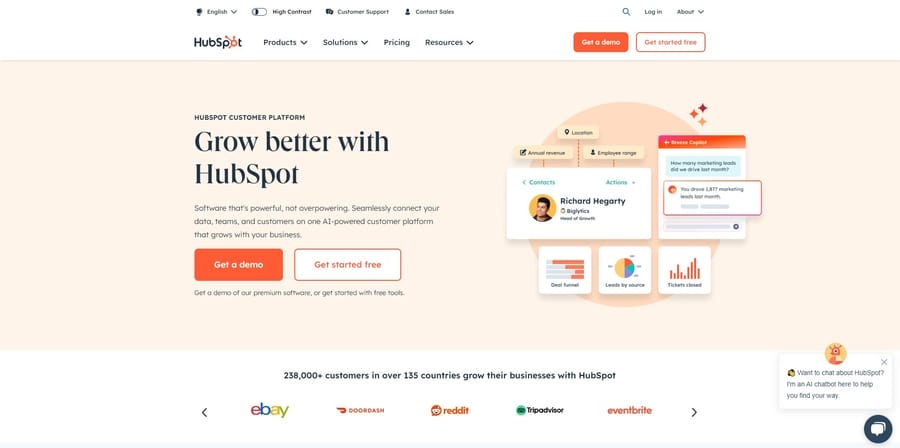
As an inbound marketing software and customer relationship platform, HubSpot combines industry-leading marketing practices with compelling content in the form of blogs, eBooks and webinars.
Its website uses lead generation tools and free resources to attract, engage and nurture potential customers, while its design is clean, easy to navigate and responsive across all devices.
2. Salesforce
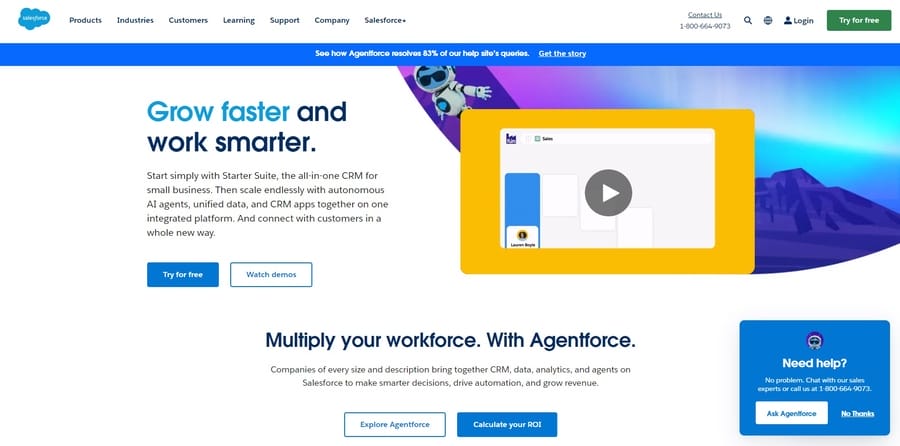
Salesforce‘s cloud-based CRM platform focuses on scalability and customization and revolutionizes customer relationships with Software as a Service (SaaS) solutions rather than on-premise installations.
The company’s website strategy helps clients track client interactions and data throughout the customer lifecycle, while its website boasts informative and interactive content through videos, blogs and case studies.
3. Slack
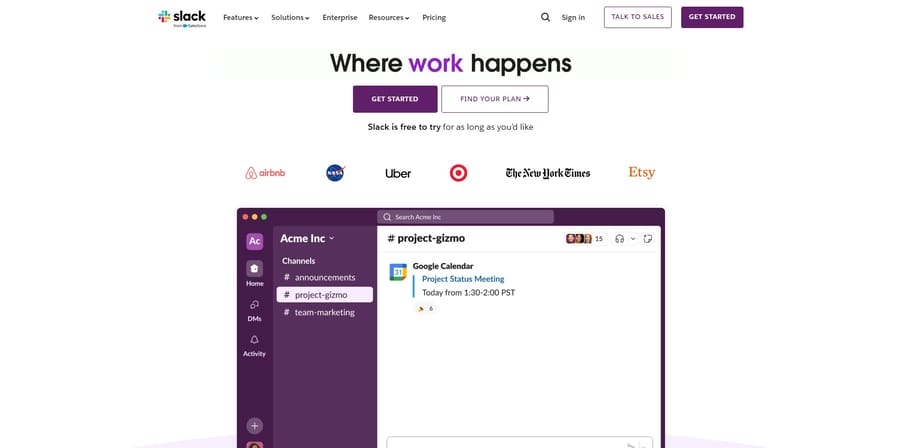
Workflow and team management apps are a dime a dozen, but few offer as many integrations and customization options as Slack does.
The platform effectively showcases its Unique Value Proposition (UVP) through simple, user-centric features, engaging website animations that offer useful tips and social proof with icons of well-known clients and partners.
4. Evernote
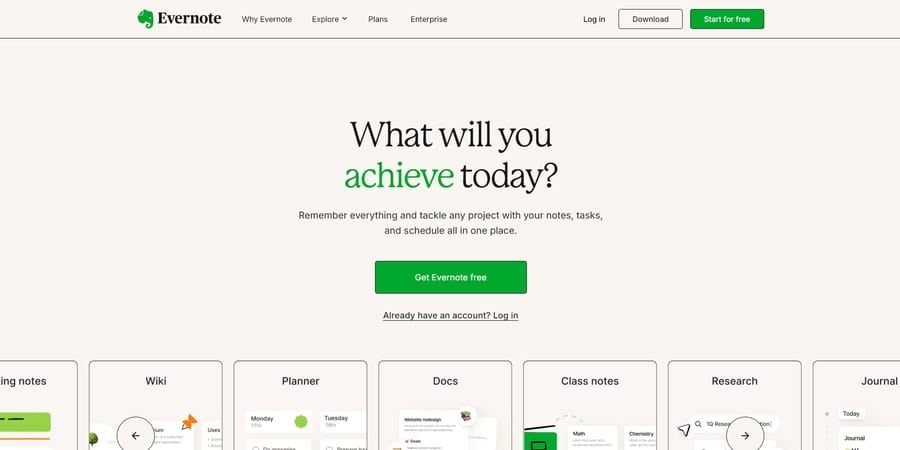
Evernote‘s website strategy proudly flaunts the platform’s experienced and innovative reputation.
The company’s goal is to help buyers “remember everything”, which suggests it’s not a single-use solution but a multi-purpose productivity tool.
5. Dropbox
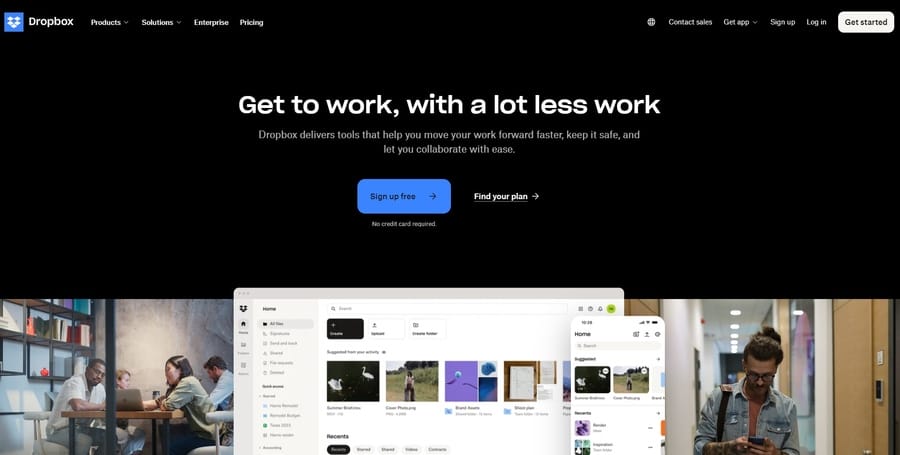
Dropbox has kept up to speed with more cutting-edge solutions with its seamless file-sharing and collaboration features while providing an extensive integration ecosystem.
Its website reflects this focus on adaptability and efficiency, with clear calls to action and a clean design that emphasizes its core features.
Why B2B Businesses Should Prioritize Website Strategies
Analyzing your target audience’s browsing habits, determining your business goals and optimizing your website accordingly with a B2B website strategy has several benefits, including:
- Drive targeted lead generation: 48% of B2B marketers cite driving enough leads as a major challenge for their business, which can negatively impact sales. With a well-strategized website, you can attract and engage potential customers to generate qualified leads.
- Establish brand credibility and authority: 69% of B2B businesses note that sales are becoming more difficult, especially in today’s saturated market. When you have a dedicated website strategy, you can showcase your expertise, thought leadership and unique value proposition to build trust and credibility with potential customers.
- Enhance customer experience: 62% of B2B professionals allocate more of their budget to improving customer experience, as it directly impacts customer satisfaction and retention. You can prioritize website strategies such as user-friendly navigation, relevant content and responsive design to boost engagement and drive more sales.
- Offer data-driven insights: You can’t make decisions for your B2B business without data. A well-optimized website can offer valuable insights into customer behavior, preferences and interactions so you can scale, adjust and optimize accordingly.
- Ensure consistency across marketing and sales pipelines: A holistic approach to your website strategy allows you to align it with other marketing and sales efforts. As a result, you can expect consistency in brand messaging, customer experience and lead generation across all touchpoints.
- Secure future growth with scalable solutions: Website strategies aren’t just a one-time investment. A well-designed and regularly updated page can be a scalable solution for your B2B business, which helps you stay ahead of industry trends and changing customer needs.
How To Measure The Success Of Your B2B Website Strategy
Once you’ve implemented all the necessary steps, it’s time to track, assess and decide on future steps for your B2B website strategy.
Some of the key areas to focus on include:
- Performance metrics: Use tools like Google Analytics or Search Console to track conversion rates, bounce rates, traffic volume and sources, lead quality and pipeline velocity.
- Pages Per Session: Track how many pages users view during a single visit to indicate how engaging a certain website is.
- Heatmaps and user data: Determine which website elements generate the most traffic and engagement with useful metrics such as scroll, click, navigation and visual data.
- Competitor benchmarks: Compare your website performance metrics with industry standards to define your market position and untapped opportunities.
Common Mistakes To Avoid In A B2B Website Strategy
Even if you understand the pillars and benefits of an effective website strategy, your business may still be susceptible to some common mistakes, including:
- Overlooking mobile optimization: Mobile devices account for 64.04% of global traffic and underestimating its potential can negatively impact your ROI.
- Ignoring user feedback: Not actively listening to buyer suggestions and feedback can lead to stagnant sales, poor customer experience and a negative brand association.
- Overloading with features: A cluttered and disorganized website structure hinders user experience and may increase bounce rates.
- Neglecting scalability: Even if your current tech stack and interface yield positive results, not planning for future scalability can lead to costly website overhauls down the line.
Create An Effective Website Strategy With Digital Silk
Planning and executing a B2B website strategy can be a long, complex and tedious process. It requires careful attention to detail, constant adaptation and in-depth data analysis.
At Digital Silk, our experienced digital and branding strategists work closely with our web designers and developers to create websites that align with your business goals, reflect your brand identity and deliver measurable results.
As a professional web design agency, our services include but aren’t limited to:
- Digital strategy and marketing
- Branding services
- Custom web design
- eCommerce web design
- Custom web development
Contact our team, call us at (800) 206-9413 or fill in the Request a Quote form below to schedule a consultation.
"*" indicates required fields


